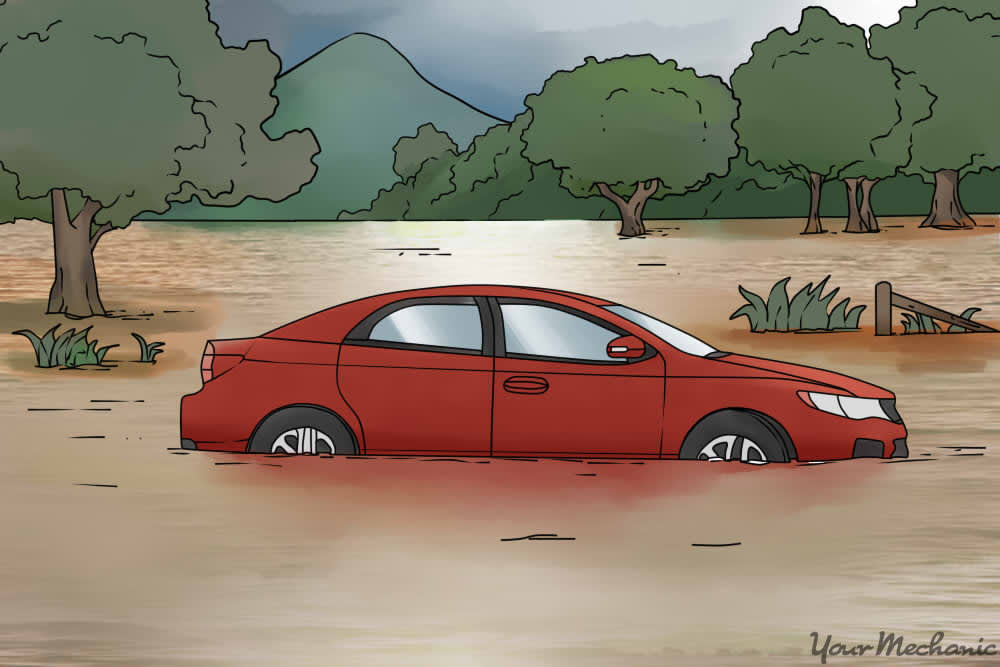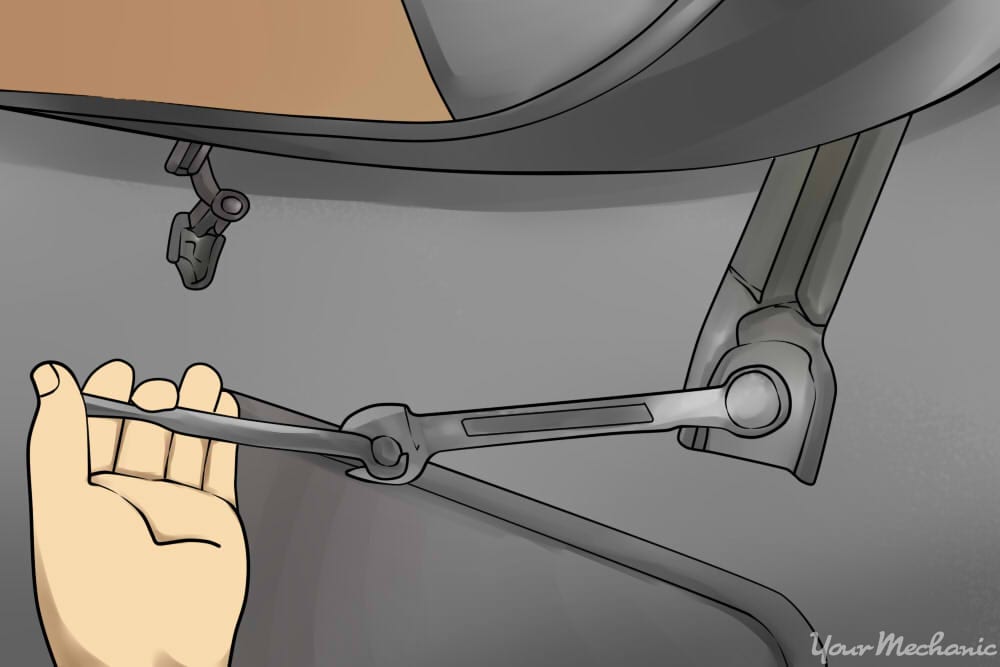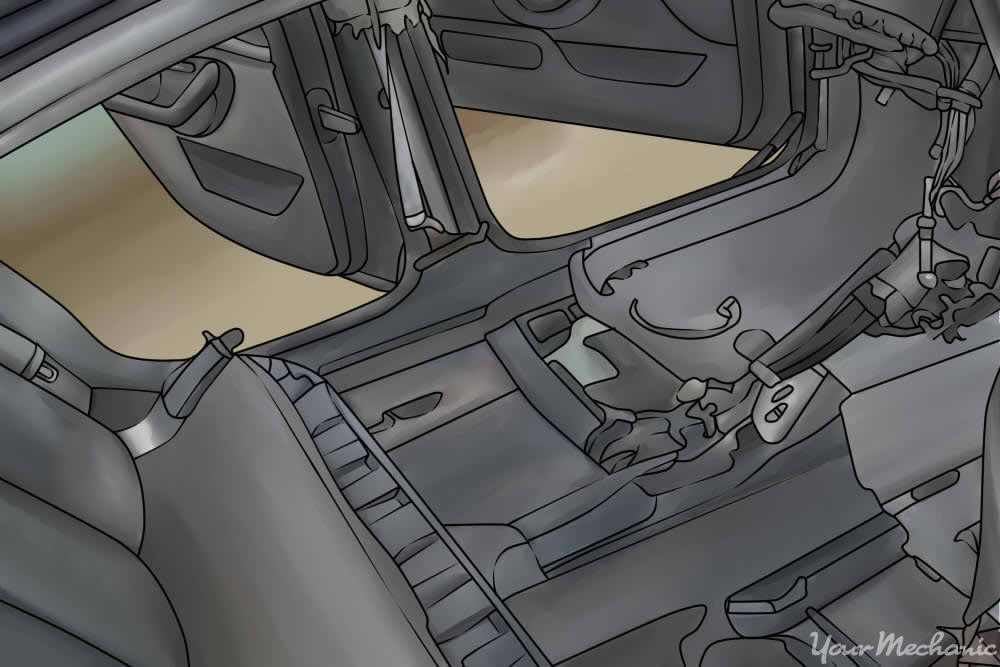

Your car is well-protected from regular environmental elements like sun and dust; but sometimes, extreme circumstances like floods can cause massive amounts of damage to your vehicle.
Flash floods can occur when water has nowhere else to go, and cause the accumulation of water in low-lying areas. If your car is parked in such an area, it can get flooded - leading to interior and exterior damage.
You may not think that water in your car is such a big deal at first, but flooding can cause the following issues:
- Electrical connections and wiring can corrode or short
- Metal surfaces can rust prematurely
- Nuts and bolts can seize
- Saturated carpet and upholstery can develop mold, mildew, and odors.
If your car is insured when it is in a flood, most often it will be deemed a total loss by the insurance company and written off. You'll be paid the car's valued amount so you can get a different vehicle.
If your car isn't insured, or if your insurance coverage doesn't include flood damage, you may be stuck with a vehicle that has water inside it.
Here's how you can clean out your car and minimize the effects of water damage on your vehicle.
Part 1 of 4: Remove standing water from your car's floor
If rain water has flooded your car, all you'll have to do is remove the water.
If the water is from rising flood waters or ground swell, the water that got into your car will be dirty and can stain everything it touches. Either way, you'll need to clean it out before you can inspect your car’s working condition.
- Warning: Make sure the battery is disconnected before you start working on your car.
Materials Needed
- Dry cloths
- Ratchet and socket set
- Trim removal tools
- Water
- Water hose or pressure washer
- Wet/dry vacuum
Step 1: Remove excess water. Use a wet/dry vacuum to suck up the remaining water from the floors. If there is more than an inch of standing water in your car, use a bucket or a cup to bail it out before using the vacuum.
- Tip: Remove the filter and bag from your wet/dry vacuum to prevent it from getting saturated.
Step 2: Remove and dry any loose objects. Hang floor mats up to dry in your basement or outside in the sunshine.
Step 3: Take out the console and seats. If there was standing water on your carpets, it probably seeped through it and will need to be removed so that the floor doesn't rust. Remove the carpet from your car to get the rest of the water out.
First, you’ll need to remove the console and seats using your ratchet and socket set. Disconnect any wiring connectors under the seats and in the console so they can be fully removed from the car.
Step 4: Use a trim stick to remove plastic trim items before taking out the carpet. Remove any trim secured over the carpet edges, such as the door sill plates, kick panels, and pillar covers.
Lift the carpet out of your car. It may be in one large piece or it may be in a few smaller sections. Lay it out to allow it to dry out.
Step 5: Remove excess water. Use the wet/dry vacuum to suck up any water on the floor that you've uncovered by removing the carpet.
Step 6: Wash the carpeting and mats. If the water in your car was dirty, wash off the carpeting and floor mats with clean water. Use a pressure washer if you have one available, or use a garden hose with a full stream of water.
If possible, hang the carpets up to wash them off and let the dirt run off easily. Wash the carpets until the water runs clean off the carpet.
Step 7: Remove dirt. Wipe off any silt or dirt that has been deposited inside your car using clean and dry cloths. Get as much dirt off your bare metal floor as you can - dirt can act as an abrasive under the carpet and wear out the protective coating off the metal, allowing rust to form.
Part 2 of 4: Dry out your car interior
With your car interior stripped, you'll be able to dry it out more readily either by air drying it or by using high-volume fans.
Materials Needed
- Air compressor with blow nozzle
- High-volume fans
Step 1: Set up fans. Get some fans and position them to blow air over your car interior with the carpet and seats removed.
Start with a dry floor before you put the carpet back in; otherwise, any moisture under the carpet can encourage corrosion and rust to form.
Leave all your car doors wide open to allow the moist air to carry out of your car.
Step 2: Use compressed air. Blow moisture or water out of tight spaces using compressed air. If there are spots in which water is trapped or pooled, a blast of compressed air will get it out so it doesn't rust in that spot.
Step 3: Dry the upholstery and carpets. After removing them from your car and washing them, dry all of the carpets, floor mats, and seats with fans.
Don't install the carpets until they are fully dry to the touch, which can take a full day or longer.
Step 4: Put everything back in. Once everything is dry, install it back in your car. Make sure every connector gets plugged back in as you reassemble the interior.
Part 3 of 4: Deodorize your car
Even if only water got into your vehicle, it can encourage the growth of mold or mildew inside your car's upholstery and on the carpet, causing bad odors. Odors make your car unpleasant to drive in and can even distract you from driving responsibly.
Materials Needed
- Baking soda
- Environmental Air Sponge
- Paper towel
- Wet/dry vacuum
Step 1: Find the source of the smell. Usually, the odor comes from an area that hasn't fully dried, such as a spot under a seat or a floor mat.
Use your hand or a paper towel to press on various locations until you discover the damp area.
Step 2: Sprinkle baking soda on the damp spot. Use a liberal amount of baking soda which will absorb the moisture and neutralize the odor.
Leave the baking soda on the smelly spot overnight so it can work properly.
Step 3: Vacuum up the baking soda. If the smell returns, re-apply baking soda or try another method of odor treatment.
Step 4: Neutralize smells. Use an odor-absorbent material or air sponge to neutralize smells. Items like air sponges will remove odors from the air, leaving your car smelling fresh and clean.
Part 4 of 4: Evaluate extent of water damage
Once you've removed all the water and ensured the air inside your car is breathable, check your car over to find out any damage due to the flooding.
Step 1: Check any controls that were submerged in water. Ensure the emergency brake is operational and check that all the pedals move freely when pressed.
Check that any manual seat adjustments move freely back and forth. Make sure the fuel tank release, trunk release, and hood release all work properly.
Step 2: Check your electronic systems. Check each power window and door lock to make sure they are operational. Check that the radio functions and your heater controls operate.
If you have power seats, make sure they move in the right direction when the button is pressed.
Step 3: Check all dashboard indicators. Connect the battery, start your car, and check for any warning lights or indicators on your dashboard that weren't on before the flooding occurred.
Common issues that come up when water damage occurs include airbag module issues, as the module and other connectors for airbag controls are often located under the seats.
If there are mechanical or electrical issues that have occurred as a result of the flooding, get a certified mechanic, such as one from YourMechanic, to perform a safety inspection of your vehicle.





